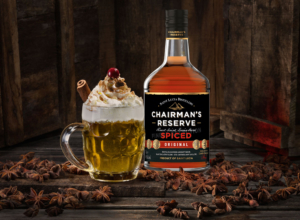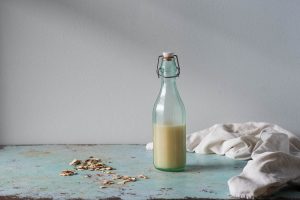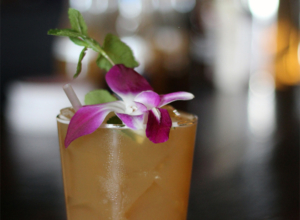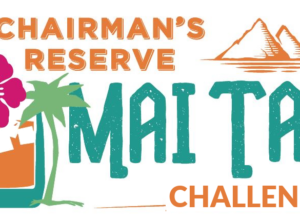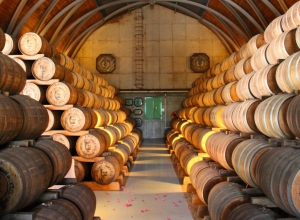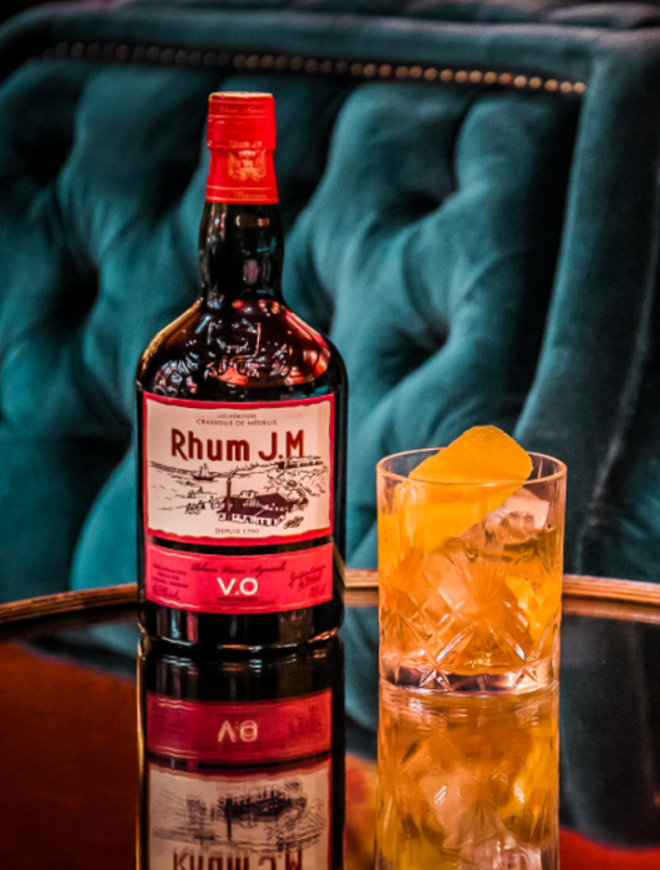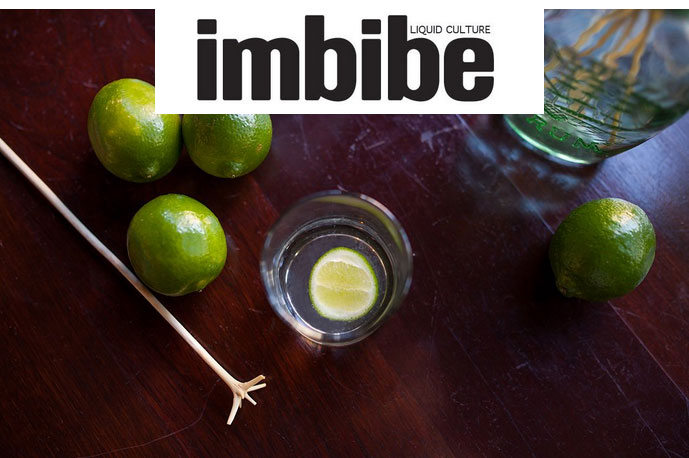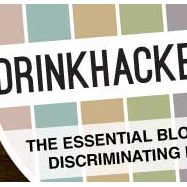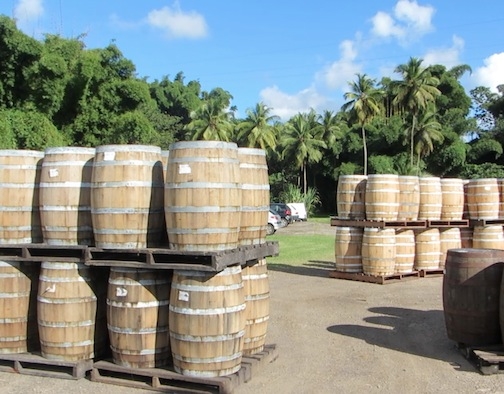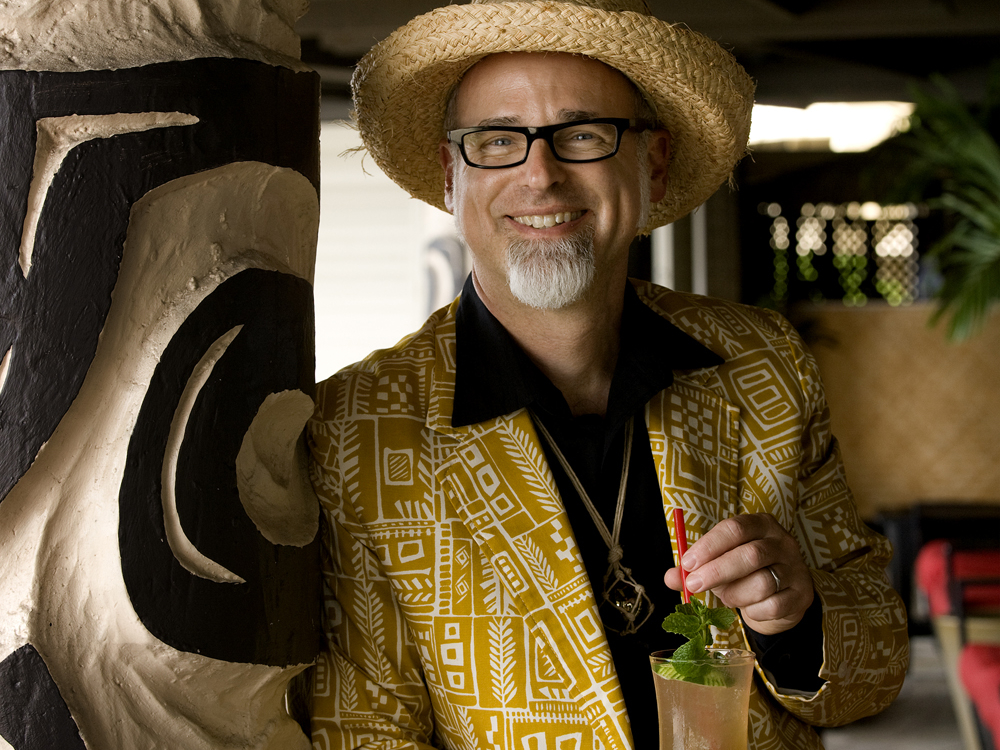
To rum fans, Jeff “Beachbum” Berry needs no introduction. One of Imbibe magazine’s “25 Most Influential Cocktail Personalities of the Past Century,” Jeff is the author of six books on vintage Tiki drinks and cuisine, which Los Angeles magazine dubbed “the keys to the tropical kingdom.” Esquire calls him “one of the instigators of the cocktail revolution” and Food & Wine “one of the world’s leading rum experts.” His New Orleans restaurant, Beachbum Berry’s Latitude 29, is a tiki temple and treasure chest.
Jeff took a few moments to talk tiki with us —specifically about the Mai Tai, in advance of the Chairman’s Reserve Mai Tai Challenge.
Why is the Mai Tai significant in the history of cocktails?
Aside from the Zombie, the Mai Tai was the one tiki drink that crossed over into the non-tiki cocktail world. That happened in the 1950s during the advent of passenger jet travel to the new state of Hawaii. The Mai Tai became less a drink than a symbol of your island holiday, either the one you’d taken or the one you aspired to take. It was a liquid vacation, paradise in a glass. Mai Tai fever prompted even more mainland restaurants and bars to go Polynesian, and more mainlanders to order it in non-Polynesian themed bars and restaurants, from steakhouses to neighborhood bars. It helped that unlike the Zombie and its ilk, the Mai Tai was a very easy drink to make — shaken, not blended, with five ingredients max — and tasted like a sophisticated yet still approachable “improved” rum sour. That’s why, today, the Mai Tai is the one tiki drink you can almost always find on the menus of even the most serious-minded craft cocktail bars.
Where does the Mai Tai fit into the history of tiki drinks?
The Mai Tai appears to have been a fairly obscure menu item at Trader Vic’s restaurant chain until 1953, when the Matson cruise ship company hired Vic to revamp the drink menus for the Matson-owned Royal Hawaiian, Moana, and Surfrider Hotels, all located on Waikiki Beach. There the Mai Tai — which Vic placed near the bottom of these menus, well below the Zombie and even that old warhorse, the Planter’s Punch — gained traction with travel writers. By 1955 the drink had spread virally through the islands. Or, rather, the name had: Vic’s recipe was a trade secret, so rival hotels simply mixed rum with pineapple juice or orange juice, sweetened it with grenadine, and called it a Mai Tai. With Hawaiian statehood in 1959, and the massive influx of tourists who encountered the Mai Tai at hotel luaus, Vic suddenly found his drink the biggest seller at his own mainland restaurants, which by the 1960s he was calling “the home of the Mai Tai.” It crossed over from Polynesian-themed boîtes into more generic restaurants and bars, becoming (like the Zombie before it in the 1930s) the Cosmopolitan of its day.
What was the original Mai Tai, and what did it eventually become?
While researching the Mai Tai’s creation, over many years I’ve interviewed a number of eyewitnesses who knew Don “Don The Beachcomber” Beach or Victor “Trader Vic” Bergeron, both of whom claimed to have invented the drink. To make the long story short: Don The Beachcomber’s widow, Phoebe Beach, told me that Don invented a drink he called the Mai Tai Swizzle in 1933. There’s no reason to doubt this, but the drink had disappeared from Don The Beachcomber’s menu sometime before 1937. Trader Vic’s long-time executive assistant Fred Fung told me that Trader Vic developed his own Mai Tai, without any knowledge of Don’s, in 1944. But then again, Don’s friend Mick Brownlee, who carved tikis for Don throughout the 1950s, told me what Don often told Mick — that in crafting his Mai Tai, Vic was trying to reverse-engineer a drink he liked at Don The Beachcomber’s called the Q.B. Cooler.
My take on the Q.B. Cooler story is that there’s no reason to doubt Vic started out trying to clone Don’s drink. But by the time Vic finished he’d created an entirely new formula, one he could rightly call his own. The two drinks have nothing in common except lime juice and rum, and not even the same rum.
(For the whole tangled history, check out pages 64-72 of my book Beachbum Berry Remixed).
What elements of a Mai Tai are essential — it couldn’t be a Mai Tai without them?
First and foremost, orgeat syrup. Without its almond note, the Mai Tai is basically a Rum Margarita. But almost as important is the type of rum deployed. Vic used equal parts dark Jamaican rum and Martinique rhum agricole. Contemporary bartenders are experimenting with other rum combinations in their Mai Tais, such as subbing other dark English-style rums for Vic’s dark Jamaican. Without this combo, the Mai Tai lacks depth, dimension, and crucial layers of flavor.


